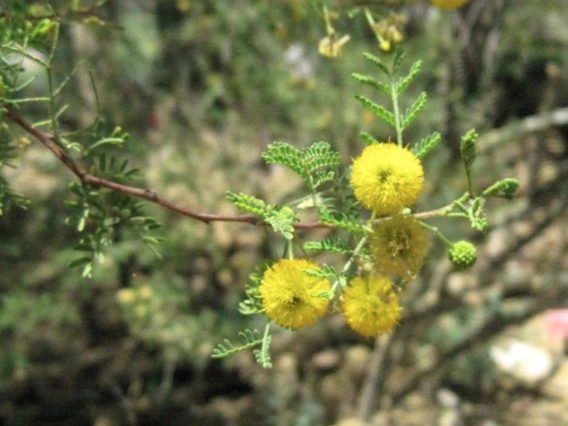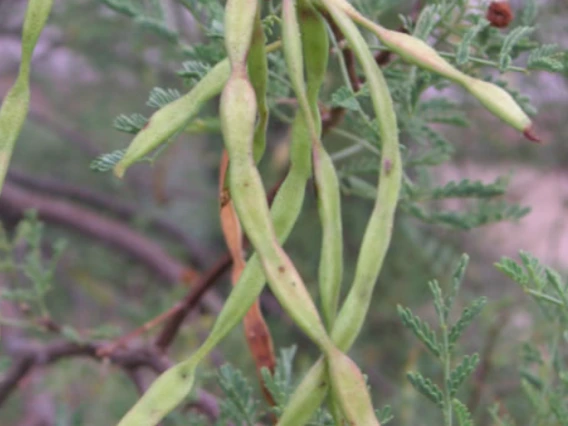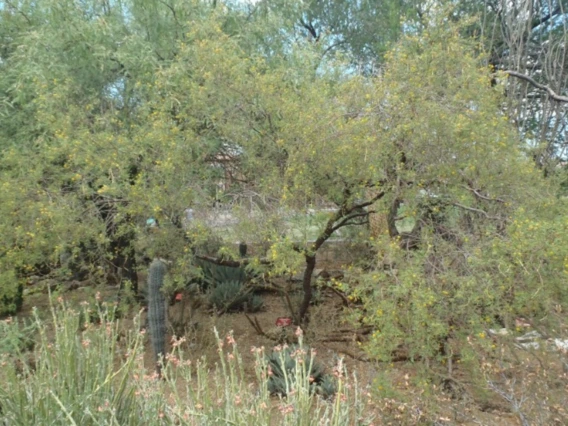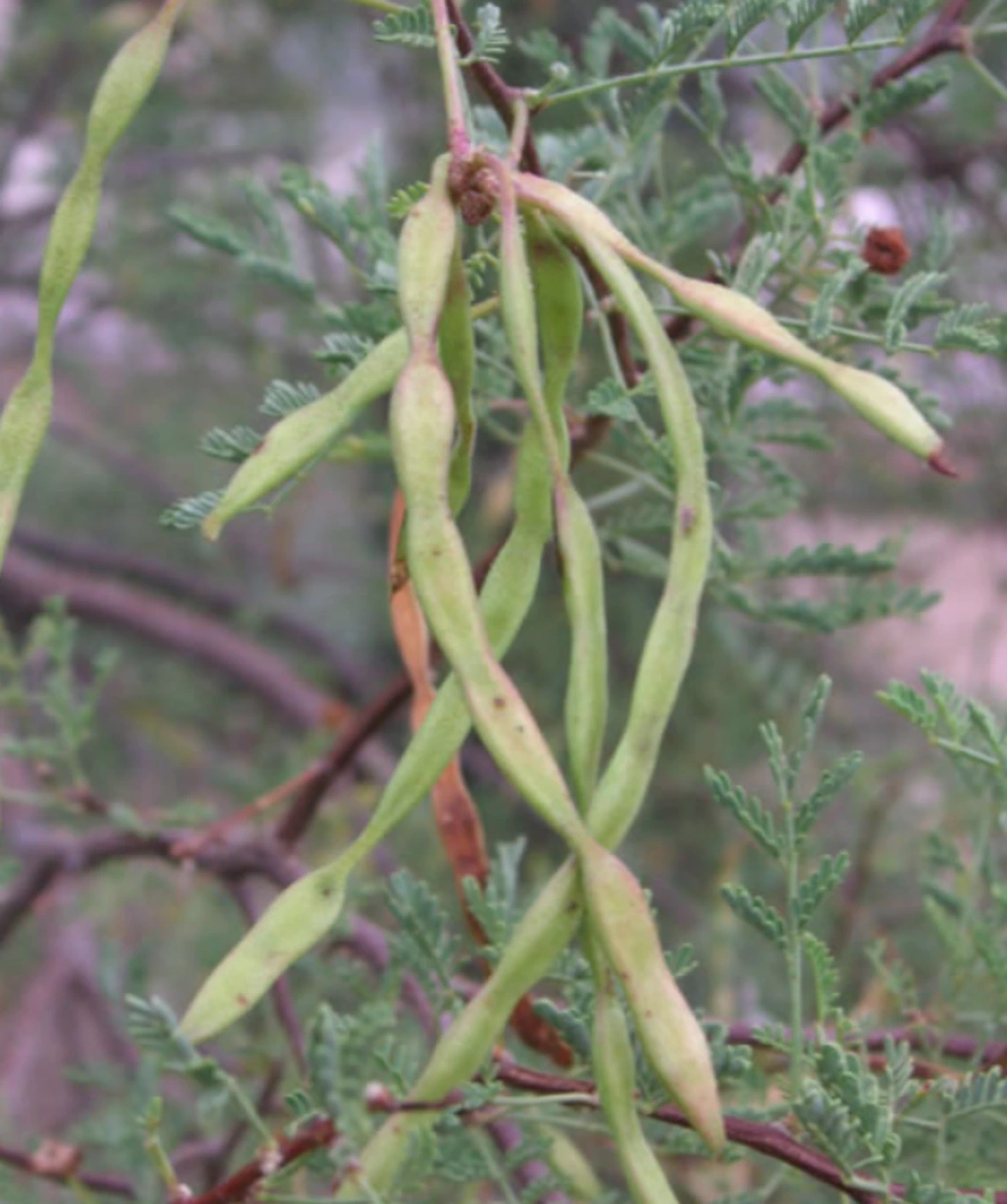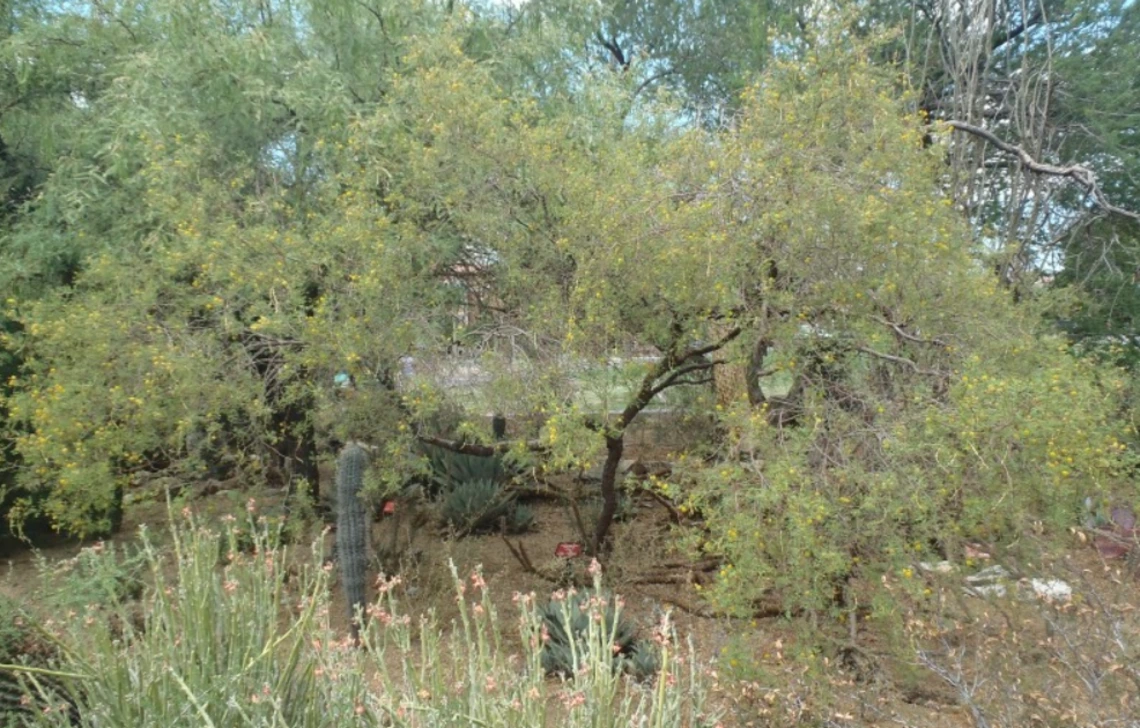Family: Fabaceae
Compound: Aca con
Synonyms: Vachellia constricta
Geographic Origin: Southwestern US, MX
Characteristics: A large shrub to small tree typically 1.8-3m (6-10ft) in height, but capable of growing taller in areas with abundant water. It has alternate bipinnate leaves that are 3.5-4cm (1-2in) long. The pinnae are found in 3-7 pairs per leaf with 6-17 pairs of leaflets per pinna. There are 2 spines at each node. The bark on its trunk and branches is dark brown to black in color and may be smooth or slightly rough. The bark on younger twigs is purple-gray to reddish. Its small yellow flowers grow in round, dense heads, and are very fragrant. The heads are about 1cm (0.4in) in diameter. Fruiting occurs from July through September. The pods are slender reddish brown 4.5-13.5cm (2-5in) long, up to 4-6mm (1.15-1.23in) wide, and are distinctively constricted between the seeds. It has white thorns 1-3cm (0.4-1.2in) in length. This plant is deciduous and drops its leaves during periods of drought or cold weather. Both winter and summer rains trigger flowering. The flowers are extremely sweet-scented.
Natural History: Found in washes and rocky hills between 610-1981m (2,000-6,500ft). Blooms provide food for many pollinators. Both native and non-native bees use the flowers as a source of nectar. Jack rabbits are known to eat the foliage, and birds consume the seeds. Rodents also gather and cache seeds, aiding in dispersal.
Cultivation Notes: This species is not commonly propagated through grafting or cuttings; instead it is fairly easily propagated through seeds. Prefers loose, well-drained sandy to loamy soils and full sun. Once established, minimal to zero water is required. It is hardy down to 5F but will lose its leaves. This is a great choice for landscaping or wildlife gardens and is often used as a barrier, or planted on a bank to control erosion.
For general plant propagation information, click here
Ethnobotany: The Comcaac used ground leaves and seeds to make tea, which relieved upset stomachs or diarrhea. The roots are also said to have medicinal properties when made into a tea. Rashes were treated with finely ground dried leaves and fruit. In modern landscaping, this tree is occasionally used for its attractive appearance and hardy nature.
Citations:
SEINet Arizona – New Mexico Chapter. Retrieved June 23, 2024.



